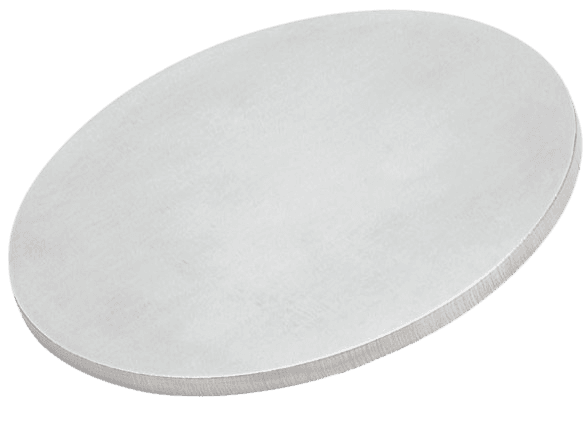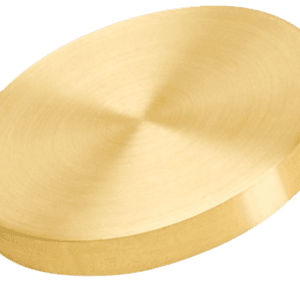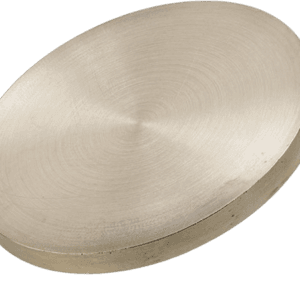Barium Sputtering Target Description
 Barium sputtering targets are made from high-purity barium metal. Barium, a soft, silvery alkaline earth metal and the fifth element in group 2, is highly reactive and never found free in nature. Barium hydroxide, historically known as baryta, is not a natural mineral but is produced by heating barium carbonate. The primary natural barium minerals are barite (barium sulfate, BaSO4) and witherite (barium carbonate, BaCO3), both insoluble in water. The name “barium” comes from the Greek word “barys,” meaning “heavy.”
Barium sputtering targets are made from high-purity barium metal. Barium, a soft, silvery alkaline earth metal and the fifth element in group 2, is highly reactive and never found free in nature. Barium hydroxide, historically known as baryta, is not a natural mineral but is produced by heating barium carbonate. The primary natural barium minerals are barite (barium sulfate, BaSO4) and witherite (barium carbonate, BaCO3), both insoluble in water. The name “barium” comes from the Greek word “barys,” meaning “heavy.”
Barium Sputtering Target Specifications
| Material Type | Barium |
| Symbol | Ba |
| Color/Appearance | Silvery White, Metallic |
| Melting Point | 725 °C |
| Density | 3.51 g/cm3 |
| Sputter | RF |
| Type of Bond | / |
| Comments | Wets without alloying, reacts with ceramics. Not recommended for sputtering. |
| Available Sizes | Dia.: 1.0″, 2.0″, 3.0″, 4.0″, 5.0″, 6.0″ Thick: 0.125″, 0.250″ |
We also offer other customized shapes and sizes of the sputtering targets; please Contact Us for more information.
Barium Sputtering Target Application
Barium sputtering targets are utilized for depositing barium thin films, which act as lubricants on anode rotors in vacuum X-ray tubes. Key barium compounds include carbonate, nitrate, oxide, and sulfate. Barium carbonate is used in chemical applications, salt brine treatment to remove sulfates, ceramic flux, and in optical and fine glassware. Barium nitrate (Ba(NO3)2) creates green colors in flares, pyrotechnics, and tracer bullets. Barium oxide is involved in making lubricating oil detergents, while barium sulfate is used in paint pigments and cosmetics. Additionally, barium sulfate is crucial in X-ray photography of the gastrointestinal tract, providing an opaque medium for contrast.
Barium Sputtering Target Packing
Our Barium Sputter Targets are clearly tagged and labeled externally to ensure efficient identification and quality control. We take great care to prevent any damage during storage and transportation.
Get Contact
TFM offers Barium Sputtering Targets in various forms, purities, sizes, and prices. We specialize in high-purity thin film deposition materials with optimal density and minimal grain sizes, which are ideal for semiconductor, CVD, and PVD applications in display and optics. Contact Us for current pricing on sputtering targets and other deposition materials that are not listed.


 MSDS File
MSDS File



Reviews
There are no reviews yet.